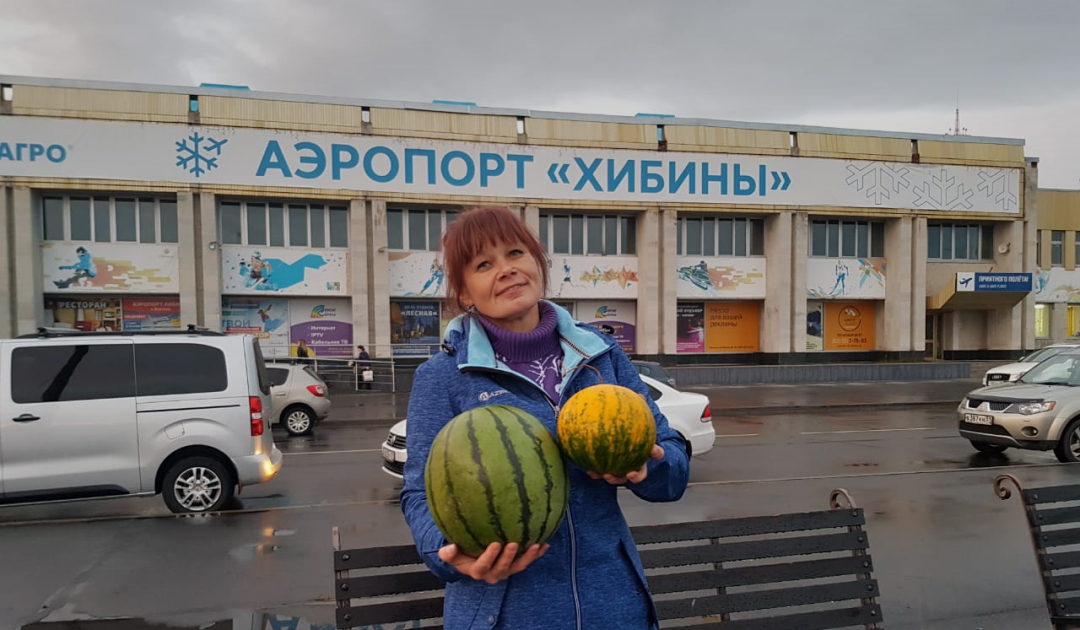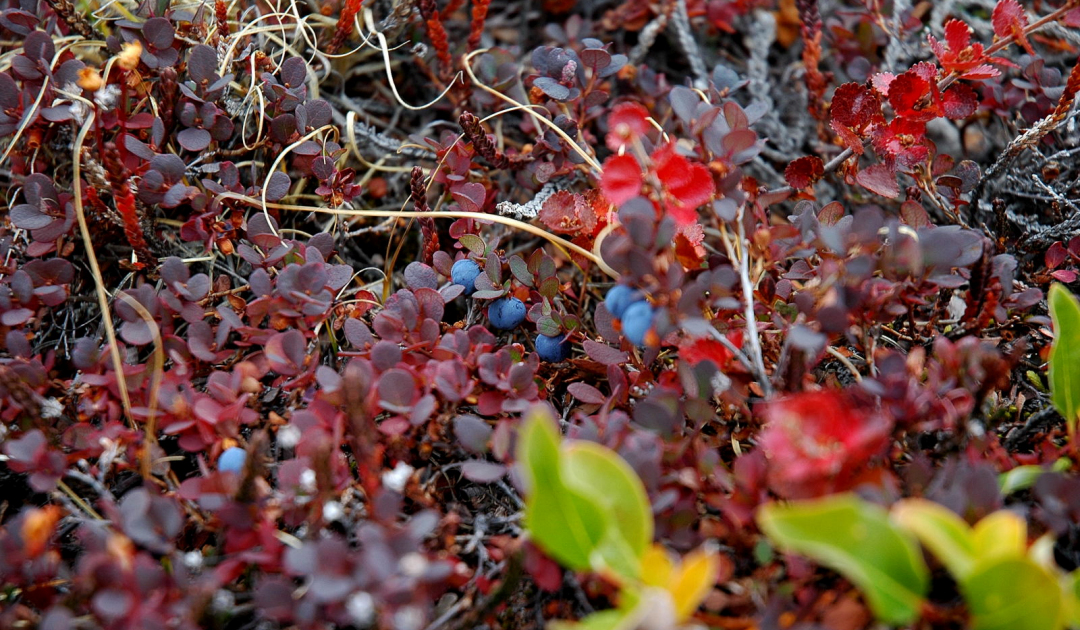
As Russia intensifies its research of the Arctic region, the issue of food supply and its security in the region becomes more pressing. In an exclusive interview with Alexey Zavarzin, Deputy Director of All-Russian Institute of Plant Genetic Resources of N.I. Vavilov (VIR) in St. Petersburg, Ecaterina Cojuhari of PolarJournal learned more about the work of the Federal Research Centre in the polar region and its plans for the future.
The program of the All-Russian NI Vavilov Plant Genetic Resources Institute (VIR) for the development of northern and Arctic plant production is a little less than 100 years old. “VIR has been active in the northern regions almost since the beginning of modern development of the Arctic, because Nikolai Vavilov, who headed the Centre for Applied Botany in 1920 and then turned it into a world-famous centre with the acronym VIR, was actively involved in the development of agriculture. Around the same time, the Soviet Union began to actively develop the Arctic regions,” explains Alexey Zavarzin, deputy director of NI Vavilov’s All-Russian Institute of Plant Genetic Resources (VIR). He adds, “I would like to remind that Nikolay Vavilov is known not only as one of the first geneticists who stood at the origins of this science, but it was his ideas and the extensive work he organized with plant genetic resources, implemented in the 20-30s of the 20th century, that finally made it possible to feed the world.” VIR’s genetic bank is among the world’s top five with over 320,000 samples. Its estimated value by the Food and Agriculture Organization of the United Nations (FAO) exceeds twice the gold and foreign currency reserves of the Russian Federation. It is the national treasure of Russia.

The first experimental station of VIR was established in 1923 above the Arctic Circle on the Kola Peninsula near the Khibiny mountain massif. The purpose was to conduct experiments on acclimatization and research of cultivation technologies of various agricultural crops in Arctic zone in order to supply the local population with fresh vegetables, fruits and other products of plant growing. For almost a hundred years, relevant work has been carried out at the Polar Experimental Station – a branch of VIR in the Murmansk region. “More than 100 varieties of potatoes, vegetables, berries, legumes, grain crops were bred at our Polar Experimental Station. They were created specifically for the conditions of northern latitudes and the Arctic. This work continues now as well,” states Zavarzin.

The modern VIR program in the Arctic is aimed not only at continuing work with traditional crops and agricultural technologies, but also at searching for new opportunities, expanding the range of crops that can be cultivated in the northern regions of Russia. “Not so long ago we started experiments with cucurbitaceous crops such as melons and watermelons. These experiments were made possible by the development of ultra-rapid varieties, which may have enough short northern summers for the fruits to ripen. And this is possible because the Arctic summer, though short, is intense and sunny.” In addition, for example grapes are also adapted to northern latitudes and the VIR also experiments with other crops. “Of course, specialists of VIR have also bred new crop varieties, but we are not talking about growing plants literally in the snow, we are talking about those territories in the North and in the Arctic, which are free from snow in summer and where the growing season lasts more than 60 days. Special varieties of potatoes, vegetable and green crops were created for such areas by VIR specialists,” he continues.

However, plant cultivation in the Arctic has its difficulties even with specially adapted plants. It also depends on where the plants are grown. “There are unique examples – for example, Solovetsky turnips,” states Deputy Director Zavarzin. “It is sweet and tasty when grown at the VIR Polar Station, but if we sow it in the Leningrad region, the root crops are not as tasty and beautiful.”
“The North has its own special plants”
Dr. Alexey Zavarzin, Deputy. Director VIR
Moreover, the Arctic regions are not devoid of plants. The peoples of the Arctic have been gathering various plants and fruits there for thousands of years. “The North has its own special plants – for example, such remarkable northern berries as cloudberry, nectarberry – Arctic raspberry, the range of which does not even reach the middle belt of Russia or Central Europe. These berries are also a very interesting and important object for the development of fruit growing in the north and the provision of high quality and fresh products for the people living there. And also for the future, to make food diversity available to other residents of Russia,” says Alexey Zavarzin.

According to the Russian scientist, the main difficulty of crop production in the polar region is the soil, which is poor in organic matter. Therefore, they need to be enriched, which again is its own technology, which has its difficulties due to temperature, soil conditions and weather. Another no less difficult problem is the length of the day. Because in the Arctic Circle the polar day lasts the whole summer and many crops are not adapted to this at all. “The centers of origin of the crops discovered by Nikolai Vavilov are in subtropical and tropical zones, where there is a clear alternation of day and night,” Zavarzin said. “On the long day, most plants continue to vegetate and do not enter the stage of flowering or fruiting. Our task is to find those forms that, for one reason or another, have lost the ability to respond to the change of day and night and are ready to go through all stages of the life cycle – to move on to flowering and fruit formation. This is what the vast Vavilov collection of genetic resources of cultivated plants, which has been collected from all over the world and which continues to be replenished, stored and studied at the VIR, allows us to do. It is the scrupulous study of this genetic diversity that allows us to identify new forms we need. We screen the collection for sample response to photoperiodism in order to identify plants that will produce fruit when the day is long. Of course, different adaptations to cold stress (periodic lowering of temperature) during the growing season and other aspects of existence in the north are also important traits for selecting parental material when creating varieties. But thanks to the collection, these issues are solvable,” continues Alexey Zavarzin.
Speaking about growing conditions, the deputy director of VIR said that now VIR focuses on crops for open ground. “When we talk about precocious melons and watermelons, which we are already testing in the second year at our Polar Experiment Station, we grow them in ordinary unheated greenhouses. The growing season in the north means evening or night frosts. So, of course, a foil greenhouse covering the bed where our plants grow is desirable, and we use this. But we do not use special heating and additional lighting. Potatoes, lettuce, cabbage, beets, turnips, other vegetable crops, strawberries, various types of currants, rye, barley, wheat – all this grows in the open air with us,” says Alexey Zavarzin.

The question arises as to why VIR is conducting such experiments in the Arctic in the first place. “Undoubtedly, one of our main goals is to make it possible to develop the Arctic. Firstly, in a number of Arctic regions people already live in permanent conditions and those works that began almost a hundred years ago and are very successful, were aimed at providing food for territories with a permanent population. This is the quality of nutrition, and therefore – health,” say Deputy director Zavarzin. “Secondly, it is regional food security. In case of any cataclysms or emergencies, the ability to feed themselves and create food supplies within a limited area defines this security. Therefore, the creation of greenhouse complexes in northern cities and the provision of artificial enclosed structures such as Polar stations is a separate task. The necessary direction of growing is the development of effective varieties for protected ground and growing in fully controlled conditions. In the latter case – when there is only snow and night outside – indoor gardening, in addition to the functional task of providing fresh vegetables and greens plays a special role: it increases the psychological adaptation of man to the northern conditions,” says the Deputy Director of the VIR. “Again, it is the diversity of material preserved in the Vavilov Collection that gives us the opportunity to develop work on the selection of forms for further breeding under the conditions of protected ground and closed systems.”
Ecaterina Cojuhari
More on the subject:







